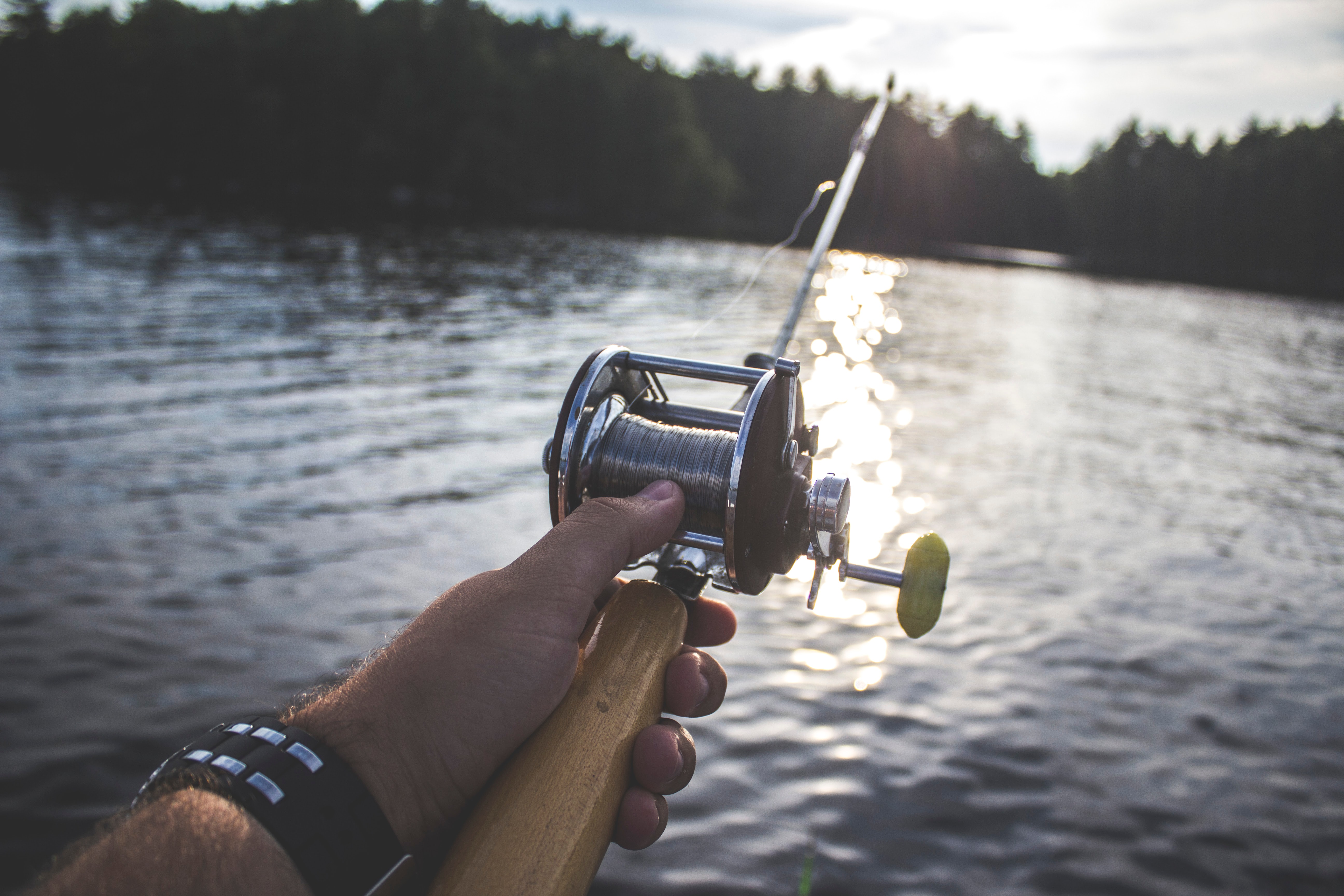
Fishing for Survival – What You Need to Know
Fishing for fun has always been extremely popular, but by 1980 only 8% of Americans activity either hunted or fished, and that number continues to drop. Fishing is a basic skill everyone should have at least a general knowledge of. Could your fishing skills keep you alive? If they can’t it’s just a question of knowledge. Whether you’ve never fished, or you’ve fished all your life, read on to add to your knowledge, or review and reinforce your knowledge of fishing for survival. You never know, a few of these fishing tips may help you survive if push comes to shove.
Always Be Prepared
Be prepared. It’s the Boy Scout motto and it could keep you alive. Regardless of your skill level do not go into the wilderness or camping assuming that you will be able to catch and cook fish. Even if you plan on fishing, pack some food in case you don’t catch anything. Bring plenty of water. If you do plan to fish always over stock on bait. It’s better to have more than you need then not enough. In addition, always pack basic supplies and an emergency bag. You may keep an emergency bag at your home in case of a bad storm, but do you have an emergency bag for camping? If not, you should. It doesn’t need to be big and bulky, just a small bag with a few key essentials. Pack an extra knife, a flare, mirror, or some other signaling device, matches, a lighter, or flint, aspirin or another pain killer, bandages, a pair of needle nose pliers, fishing line and hooks. You read it correctly, hooks. Your emergency bag should have 40 to 50 hooks of various sizes. That might sound like a lot, but it takes up very little space and if they are needed you will be glad to have them.

When the Need Arises
Whether it’s an unexpected situation or not, look at fishing as a means of adding to your available food rather you’re your sole supply. Fishing should not be your first planned option in a survival situation. If there are other food sources available, you should gather them before you attempt to fish. Fishing can be extremely unpredictable. Take stock of what supplies you have and how long they’ll stay viable. It may seem obvious but start by eating foods that will go bad first. Do your best to wait before eating foods that will stay good for a long period of time. For example, your granola bars and that jar of peanut butter can wait while you eat your apple and attempt to catch some fish. If you can catch a fish, then cook it and eat it and save your other food supplies that will stay fresh longer.
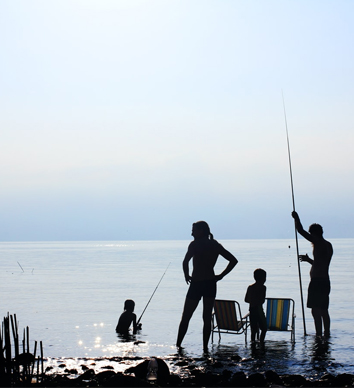

As you read over these ideas don’t just file them away and move on. Have some fun with them. How do you do have fun with survival tips? Practice them! It’s the perfect way to be prepared. First, practice will push all these ideas into your long-term memory, and then of course if you need the skill you already have the basics down. When it comes to survival all the rules get thrown out the window but do make sure you follow local laws and regulations when attempting to fish for fun. Of course, you can practice making tools without a fishing license, but before you do go fishing get a license if it’s required. It’s normally quick, easy, and inexpensive to get a license. In many states you can acquire a fishing license at your local sporting goods store. Just ask an employee, if they sell fishing gear someone in the store will be happy to tell you how to get a license even if they don’t offer the license directly at the store.
Are You Ready To Fish?
Bait
While not required bait will certainly make fishing easier. The good thing is that bait can normally be found almost anywhere. Fish will eat almost any kind of bug. Fish will even eat a bee if you put it on a hook. Look under dead leaves, near rotting wood, or on trees. You’ll be shocked to see how many insects are out there and how easy it is to find them. Worms, caterpillars, snails, slugs, grasshoppers, beetles, and even ants can work as bait. Different fish will favor different types of bait so change things up and try all the different types of bait you are able to acquire. Once you find a bait that’s working stick with it.


Types Of Fishing:
Set Lines
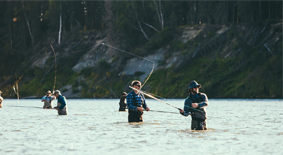
In a survival situations Set Lines are a great place to start. While there is some time and effort required to set them up, there is minimal effort in maintaining them if they are setup correctly. Set line fishing almost defines itself. The idea is to take one long line and then attach smaller lines, normally with hooks and bait to go across a body or section of water.
The best placement is to have the main line reach completely across a small section of a river where it narrows, or perhaps across a narrow section of a lake. We will discuss where to fish in more detail later, but if possible, place the lines between where fish might be and where they might be trying to go. Your main line must be secure on both ends. It can be in the water or above it, but don’t let it fall. The string should be tight and able to take a good amount of tension. It can be tied to trees or stakes you drive into the ground, but make sure it can stay secure without you present for a long period of time.
On the main line you’ll add drop lines. It’s better to measure up the area and attach your drop lines before setting the main line. The drop lines should be spaced evenly, and they should all have equal length. The space between them depends on how much line you have, how many hooks you have, and the depth of the water, but your spacing must always be twice as long or longer than the length of each drop line. If two drop lines can reach each other they can, and likely will, get tangled up. As we have said one end of the drop line connects to the main line. The other end will have a hook that dangles in the water. If possible, add a small weight to each drop line to keep the line tight. Make sure your drop lines don’t touch the bottom. Try to make sure the hooks stay in the water for as much of the day as possible. Tides will raise and fall so check your placement frequently the first day after you have it set. Add some bait to each hook and then leave it. This setup is generally called a Trotline. This allows you to fish all day with little effort. Just check the lines and add bait as needed once or twice a day while you attempt to fish at some other locations in a different way.
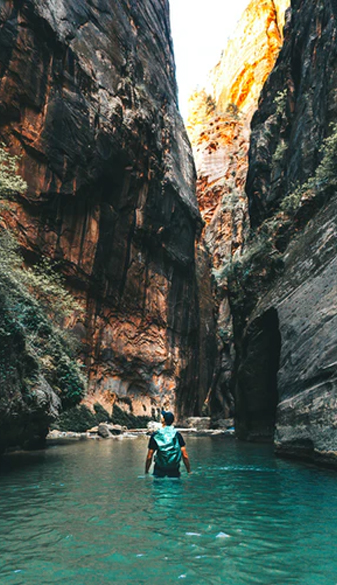
Angling

The most common form of fishing is called angling. You may not be familiar with the term, but it’s just fishing with a pole and string. You can buy an inexpensive rod and reel to practice and if you find yourself without your pole in an emergency just about anything can serve as a pole or a line: a long reed, a bit of string, or whatever else you have on hand as long as there’s some length to it. The skills you learn with a store-bought rod and reel will apply to something you made by hand in an emergency. The fundamentals remain the same. Practice with store-bought lures and bait, but if you don’t have a lure with you when you need it you can always improvise. If you happen to be wearing something that shines (a necklace, an earring, a ring), it’s helpful to use the shiny object as a lure. Tie it slightly above where you’re going to put the bait the same way you would a lure. If there is wind or breeze while fishing you should face it. Also face the flow of moving water. Most fish face the flow of water and if you do the same as well it will increase your odds of catching fish. Once you cast your line the hardest part of angling is the waiting.
Netting

There are several different types of netting, but let’s focus on two of the most common, Gill Nets, and Dip Nets. Net’s can be made from string, rope, vines, or whatever stringy material you can find. Try to get a general feel for the size of the fish in your area. Cleary the grid pattern you make should be small enough to prevent the fish from easily swimming through. Fishing with a net is easiest in rivers where the flow of water downstream can be limited to a restricted area. Angling is difficult in bodies of water that are moving quickly, but netting is ideal for theses environments. The net should be placed in the most limited access area, and if fish are in the river you should be able to catch some if your netting is constructed correctly for the size of the fish in the river.
Gill nets are placed in the water similar to how you place a Trotline. The fish will get caught in the net as either the flow of water pushes them into it, or they try to swim through it. Like a Trotline you can set these up and then check a few times a day.
Dip Nets and Dip Netting take a bit more effort. When making your dip net think of nets use to catch butterflies or scoop leaves out of a pool. Your net should be setup on a stick or pole. Place the net in the water as slowly as possible to avoid scaring the fish. If water is flowing the open side of the net should face were the water is coming from. Wait for fish to flow into the net or quickly scoop one up when it gets close. Make sure you move quickly so the fish doesn’t have time to leap out of your net before you can get it out of the water.

Spearfishing
Spearfishing can be easier than angling when fishing in the ocean. It all depends on the gear you have available. If you somehow happen to have snorkeling gear with you spearfishing might be a better option. You will of course need a spear. You can take a stick and sharpen one end, but one big point is difficult to fish with. It’s better to sharpen many small sticks and then use a rope to spread them out like a little circle on the end of your main spear, but it can be tricky to get a firm connection to the main spear if you use multiple pieces of wood. A great alternative is to split the end of your spear into multiple points and then force string or rope between the points which will force the points to fan out.
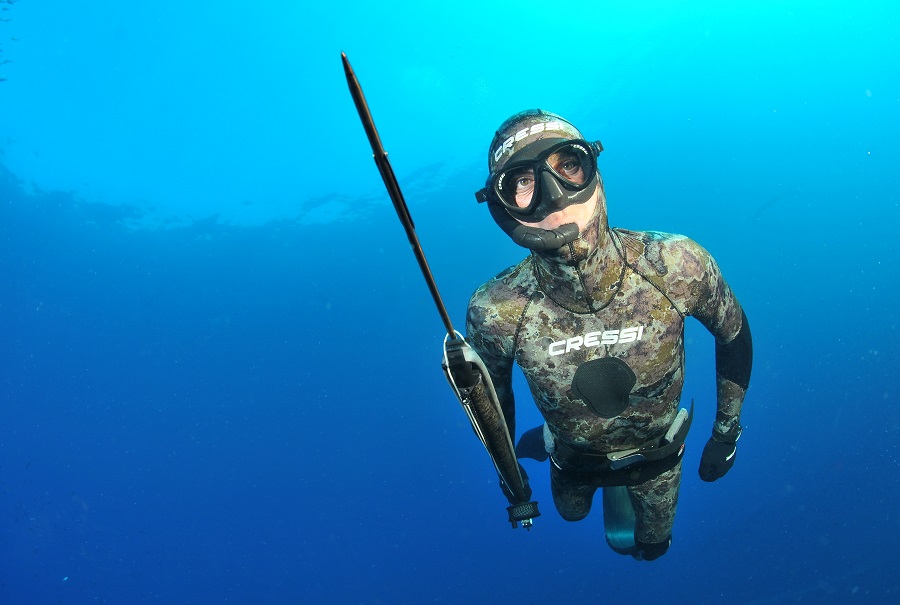
Spearfishing does take a great deal of patience. If you don’t have string or fishing line it may be your only option. Unfortunately, this method relies upon knowing where the fish are. Limiting the areas where the fish can go will increase your odds of catching one with this method. It’s not as easy as you might think to pierce though a fish’s scales. When you feel your aim is true use as much force as you can. Keep in mind that if your head is not in the water your view of where the fish are is warped. As a general rule aim just below the fish in you line of sight. Aim below the fish and not visually directly add it. The deeper the water the more visual warping will occur.
Trapping

There are many different types of trapping, but the general idea is the same for all of them: give the fish a path in, but not a path out. While trapping can be efficient it is tricky. It can be very time consuming to construct your trap and if it’s not the correct size it will not work. The idea is to have a funnel shape that the fish can follow. As the fish moves forward the path get’s smaller and smaller, but the end leads to a wider open area, or at least it appears to. The fish will see the open area and desire to go into it and once in the fish can’t get back out.
One type of trap using this idea is a Fish Weir. A Fish Weir is a wall with a funnel that leads to a sectioned off and completely enclosed area of water. It’s completely blocked off by the weir wall on one side and fish have nowhere go.


Another type of trap is the Basket Trap. With a basket trap the funnel simply leads to a basket that holds the fish. If you have any empty 2-liter soda bottles they can be used to make basket traps, but it will only work for small fish. Cut the bottle in half where the opening you drink from meets the full size of the bottle. Flip it around and force it into the other half. You now have a funnel that leads to an open space, and better yet in most cases the fish can’t see the bottom is a trap. Clearly the soda bottle will only trap little fish, but little fish are better than no fish, and little fish are perfect bait for bigger fish if you also have some fishing line and hooks.
Bare-handed FISHING FOR SURVIVAL
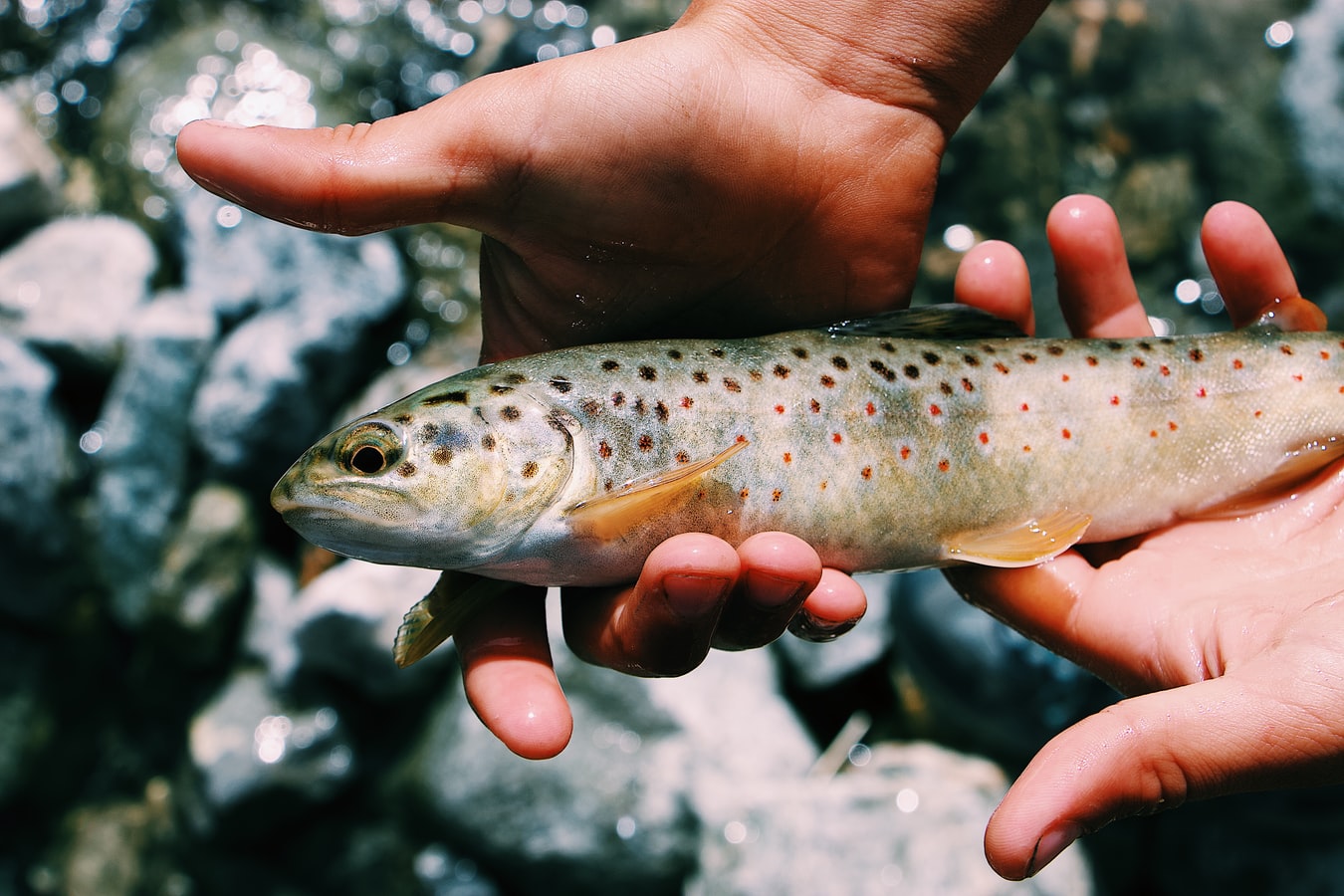

Where To Fish
In a survival situation where do you fish? It’s the same places you’d always go to fish. As discussed with different types of fishing there are different variations on where it’s best to fish, but some rules do stand true for all types of fishing. The good news is that regardless of what type of water or water features you are fishing in, the less the body of water is fished, the more likely there will be fish in the water and the easier it is to catch the fish that are there. Fish learn to avoid different fishing techniques and in this case being lost in a remote area may be an advantage. The fish in remote areas haven’t learned to avoid the fishing techniques we have outlined.
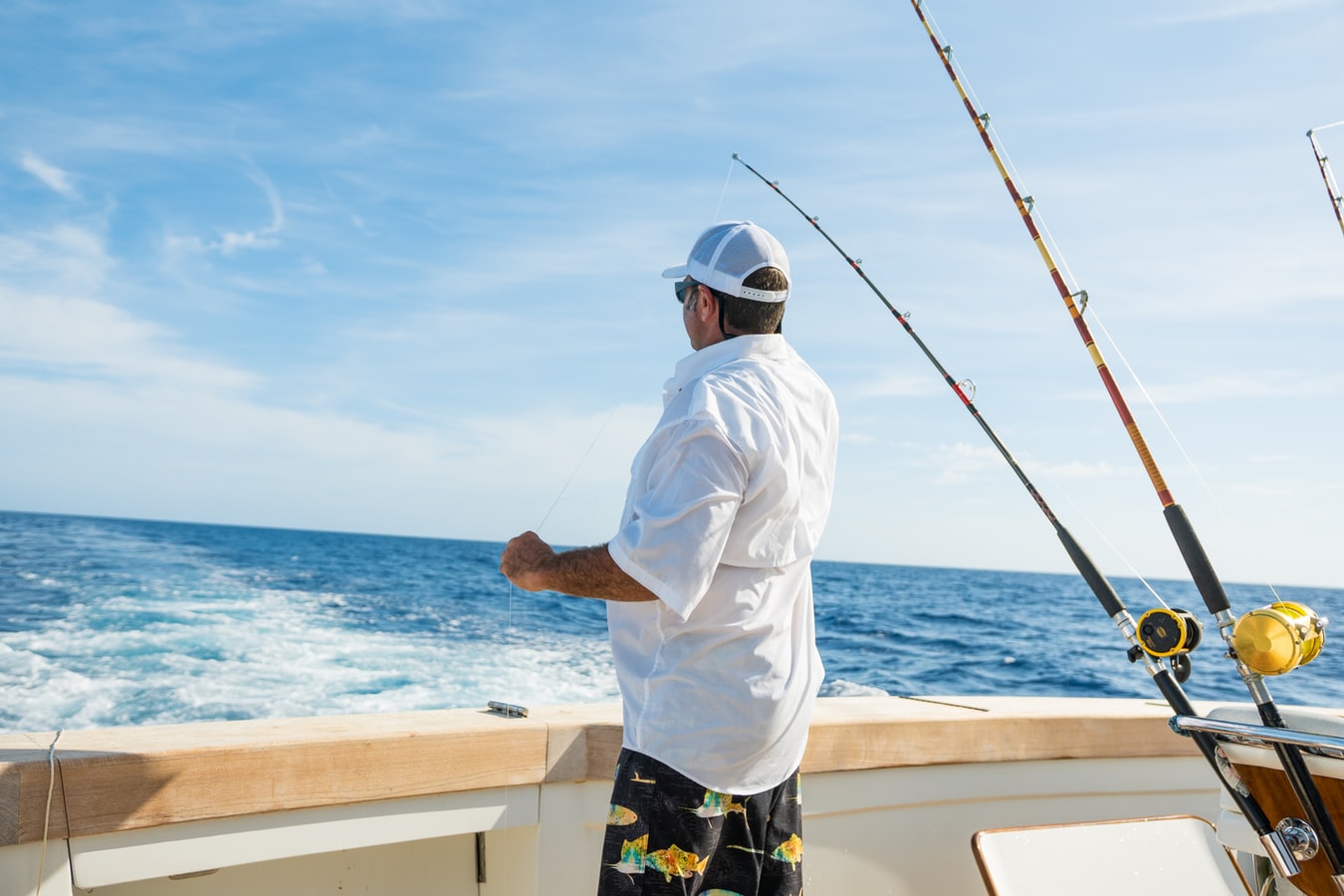
A good general rule for fishing is look for cover or some sort of environmental difference. Fish tend to gather in those areas which make them ideal for fishing.
Why do fish like cover?

The same reason you like to sit under a tree right when it’s hot out. To avoid the heat. At least that’s one reason. It’s not all about staying cool. The shade also prevents the fish from being seen by predators. Whether it be birds high above or animals near the water’s edge it’s easier to catch what you can see, and fish hide under any available cover.Fish have learned to stay in the shade, so when fishing you should look for a shady areas in the water. Shade can move around, and so do the fish. When the shade moves you should move with it.
An environmental difference is a physical feature in or near the water. If water pools near rocks and flows over them to another part of a river you can be sure there are more fish where the water pools. If a river forks that’s another great spot to fish. Fish near a large or out of place rock in the water or near a patch of reeds sticking out of the water. They are both great places to fish. If you find a random tree with its roots sticking out into a lake or river that’s another great place to fish. Look for something different. If you can find an environmental difference and it’s under some cover you may have hit the ideal place to fish.


Another consideration is the time of year. Spring and fall are just all-around good times to fish. During the summer keep in mind that fish try to find cool water, that means they go deeper, or as already mentioned stay in the shade. It might seem like common sense but during the summer It’s cooler in the morning and evenings which are also the best times to fish. Cloudy days are always better than sunny days for fishing.

General Rules For All Types Of Fishing

Be patient. Fishing is a waiting game. Stay out of sight and be quiet. Yes, fish can see you. When fishing set a flashy lore to catch the fish’s eye, but you don’t want to catch the fish’s eye while are standing by the water trying to catch them. Fish can see you and fish are smart enough to swim away when they do. The same applies to sound. If a fish hears you stomping around, they will flee. Lastly don’t stay out in storms or heavy rain trying to fish. The fish will seek cover and so should you. Storms are a terrible time to fish.
Are all fish safe to eat? The answer is no, but most fish are. It’s unlikely you’ll catch a poisonous fish, but an easy rule of thumb is that if you have fish to choose from eat the fish that looks healthy and normal. If a fish tastes very bad, it’s also a bad sign and perhaps you should try a different fish. You could find yourself in a situation where the local water is not clean. If that appears to be the case try to eat smaller fish. Larger fish tend to collect and contain more of any undesirable contaminate.
Preparing Fish to Eat
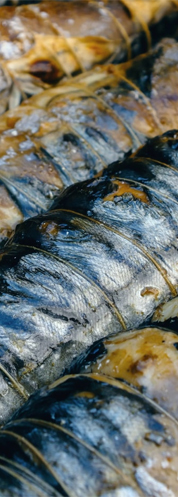
After you’ve caught a fish, you’ll either need to gut it or cook it whole over a fire. If you do gut it, remember to cut off the head. Then be sure to cut from the head to the tail, or you’ll spread the waste material all over the fish. De-boning can take time but needs to be done. With some fish it’s possible to grip the spine and pull all the bones out in one piece, but it takes practice. You’ve managed to survive and catch a fish, don’t die because you rushed and swallowed a fish bone.
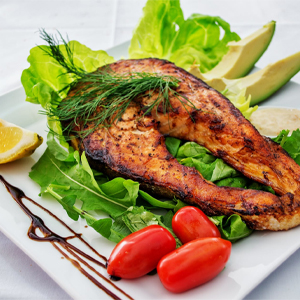
Fish can be cooked in several different ways. If you have a frying pan put it on the fire and use it to cook your fish. A frying pan is the easiest way to make sure you cook the fish evenly and don’t waste anything by burning the fish. If you don’t have a frying pan you can make a spit from wood, or other supplies, you might have. You can of course just put the fish on a stick and hold it over the fire, but it’s relatively easy to make a spit which will save you needed energy.

In Summary
Fish are plentiful in the United States although the kind of fish differ by region. Most freshwater in the United states contains some form of Bass. Largemouth Bass being very common, and luckily quite delicious. Catfish are also very common, while they may not be as tasty, they are relatively easy to catch. Crappie and Catfish are also very common, and easily pan cooked. The list goes on and on including Trout and others the point is that the fish are out there, and you just need to catch them.
